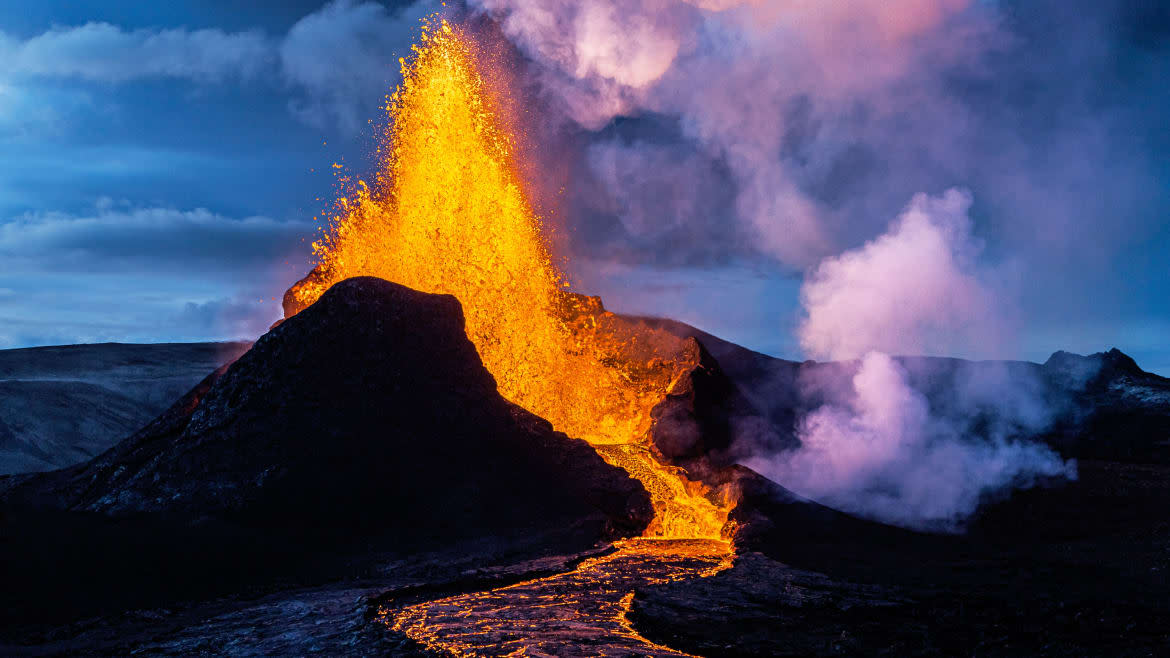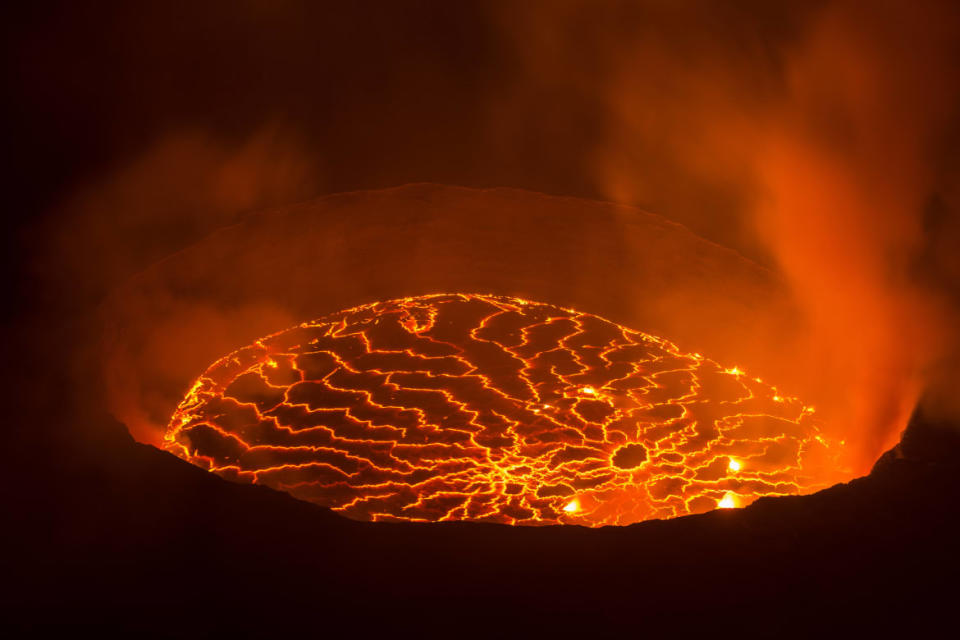We Now Know Why This Deadly Volcano Erupted Without Warning

Mount Nyiragongo, an active volcano on the eastern border of the Democratic Republic of the Congo, erupted for six hours in May of last year. Staff at the Goma Volcanic Observatory failed to predict the natural disaster and ensuing earthquakes, which forced the evacuation of the nearby city of Goma and resulted in hundreds of deaths and injuries. The event greatly alarmed volcanologists and other scientists around the world—if we couldn’t properly predict when a volcano might erupt, how would we be able to ensure we could protect people and shuttle them to safety in time?
As it turns out, there were observable warning signs we could have picked up on, had we been looking hard enough. In a new study published Wednesday in Nature, an international team of volcanologists tasked with investigating the seismologic signals of the Nyiragongo eruption found that there was writing on the wall about 40 minutes prior to the eruption that had not been previously observed. The new findings clue us into what caused the eruption, why it happened with so little warning, and how we might be able to forecast such deadly events in the future.

View into the lava lake inside the crater of Nyiragongo volcano, home to the largest lava lake on Earth."
“The beginnings of volcanic eruptions are often heralded by changes in observable features such as seismic activity, gas chemistry and the shape of the volcano,” U.S. Geological Survey volcanologist Emily Montgomery-Brown wrote in an accompanying commentary in Nature. “That wasn’t the case, however, on [May 22, 2021], when Mount Nyiragongo in the Democratic Republic of the Congo erupted.”
The destruction at Goma was triggered by sheets of magma called dikes running beneath the surface of the ground. Typically, Montgomery-Brown wrote, volcanic dikes require force to spread—meaning that scientists would be able to observe some warning signs created by phenomena like shifting tectonic plates. But that was not the case at Nyiragongo; instead, the authors of the study proposed that what occurred instead was a passive force caused by the main portion of the volcano spreading out due to its own weight. Unusual, too, was how close to the surface the magma sheets were, allowing the dike to easily burst through the surface and trigger earthquakes.
“Being already close to the surface, the magma only had to propagate laterally for a short distance before erupting, leaving little time to detect and interpret the associated signals,” the authors wrote in the study. That 40-minute time period, they added, “is extremely short, yet it would allow for some risk-reducing actions” that were not undertaken.
Mount Nyiragongo Erupts in Congo, Sending Thousands Across Rwanda Border
The team of volcanologists investigated several aspects of the eruption, including by surveying local residents about how the disaster affected both the city’s infrastructure and its people; analyzing ash plume data collected from space to infer volcanic activity; and modeling how the dike spread from the main part of the volcano.
However, it remains unclear how useful analyses that focus on passive dikes will be for other volcano eruptions, Montgomery-Brown wrote. Equally important for disaster preparation are “building efficient lines of communication, developing public awareness of risks and reducing exposure to unexpected hazards,” she wrote.
If we can shore up those other considerations, we may be able to build some more plans that could save lives from future disasters like this. Less than an hour to may not be much time to prepare, but it could be the difference between life and death if we can craft preparedness plans accordingly.
Get the Daily Beast's biggest scoops and scandals delivered right to your inbox. Sign up now.
Stay informed and gain unlimited access to the Daily Beast's unmatched reporting. Subscribe now.

